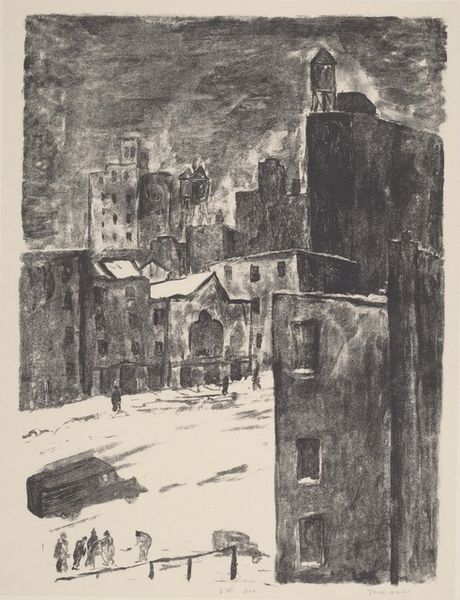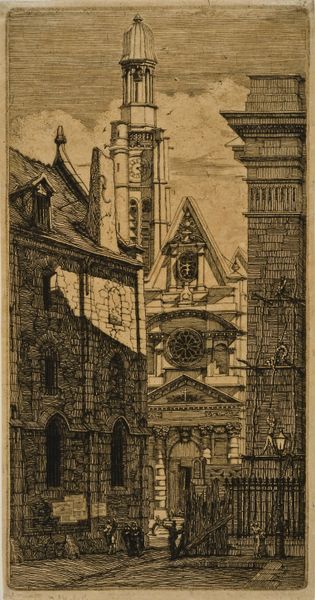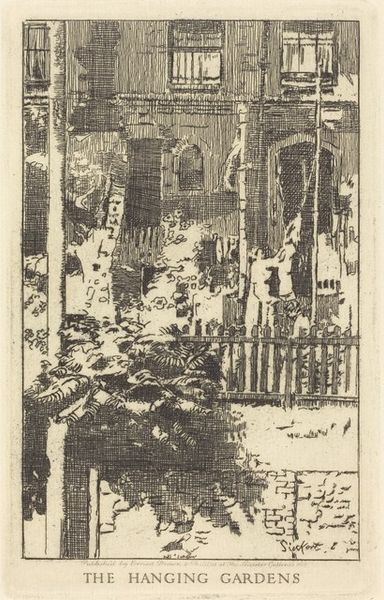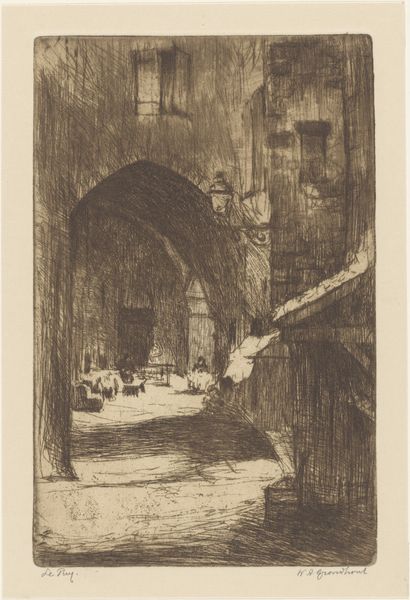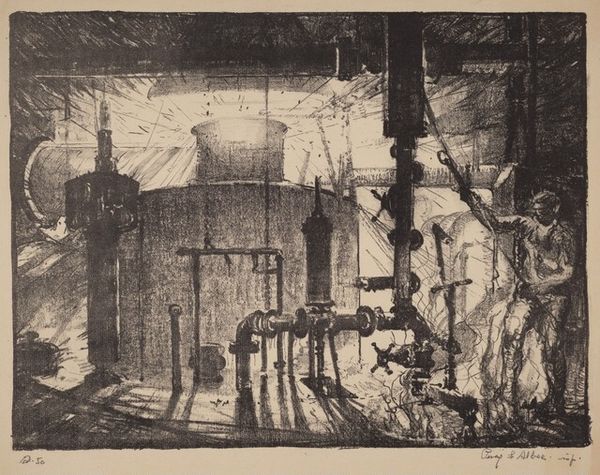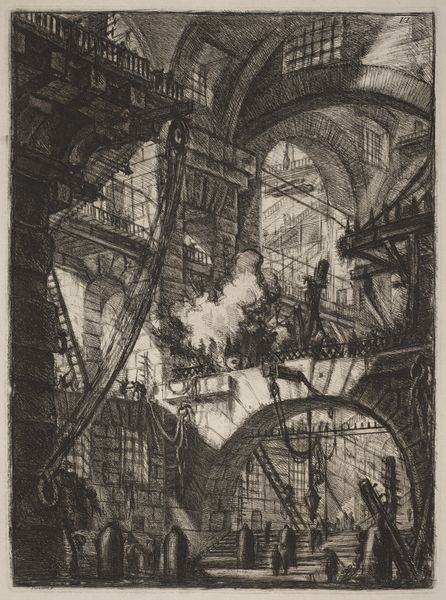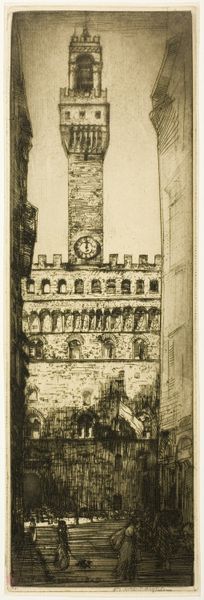
Dimensions: plate: 24.5 x 16.8 cm (9 5/8 x 6 5/8 in.) sheet: 35.6 x 23.5 cm (14 x 9 1/4 in.) overall (mat size): 55.9 x 40.6 cm (22 x 16 in.)
Copyright: National Gallery of Art: CC0 1.0
Curator: At first glance, this print by F.L. Griggs feels almost like a dream. The architecture, particularly the grand cathedral in the background, possesses this sense of timelessness and immutability. Editor: Yes, that’s it exactly. I get this pervasive sense of the eternal and something deeply embedded in collective memory. This immensity looming over the daily lives depicted makes it emotionally evocative, with a feeling of reverie, yet slightly unsettling. Curator: It is interesting you say that because "The Almonry," completed in 1925, is actually a careful rendering through etching and drypoint of a constructed scene. Griggs, though working in the early 20th century, deliberately evoked a medieval aesthetic. Editor: That explains this visual feeling, the one that connects back to places from a collective cultural past! He really tapped into some powerful archetypes there. This gothic architecture isn't just buildings; it suggests the weight of institutions, belief systems. It is fascinating to consider its connection with the Arts and Crafts movement. Curator: Absolutely. This also brings us back to Griggs' complex relationship with modernism. He overtly rejected its trajectory towards abstraction, instead using meticulous realism and historical settings to critique industrialization and what he felt was the loss of spiritual depth in modern life. The architecture certainly reinforces those sentiments. Editor: Look at the tiny figures walking across the terraced walkways. They appear both protected and overshadowed. Curator: He frequently featured those lone figures, the eternal pilgrim maybe, reminding us of humanity’s perpetual search for meaning within these grand historical and spiritual landscapes. The interplay of light and shadow only enhances that feeling, wouldn’t you agree? Editor: Indisputably, those chiaroscuro effects absolutely create this dramatic contrast between the known and the unknown. For me, it reflects a struggle between secular life and sacred aspiration. So while Griggs might have been anti-modern in his style, I think he touched upon a very modern sense of alienation, or perhaps a longing for something that modernity couldn’t provide. Curator: Well said. It certainly adds to the layers of interpretation we can bring to the work. Editor: Yes, considering its role in shaping our understanding of society is valuable here.
Comments
No comments
Be the first to comment and join the conversation on the ultimate creative platform.

